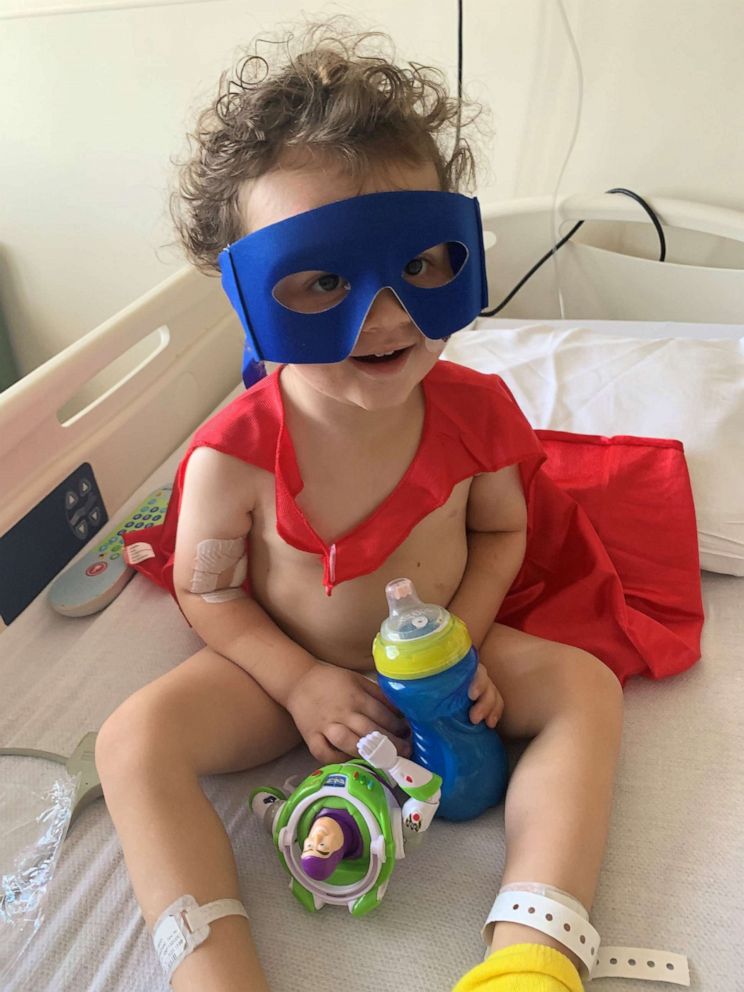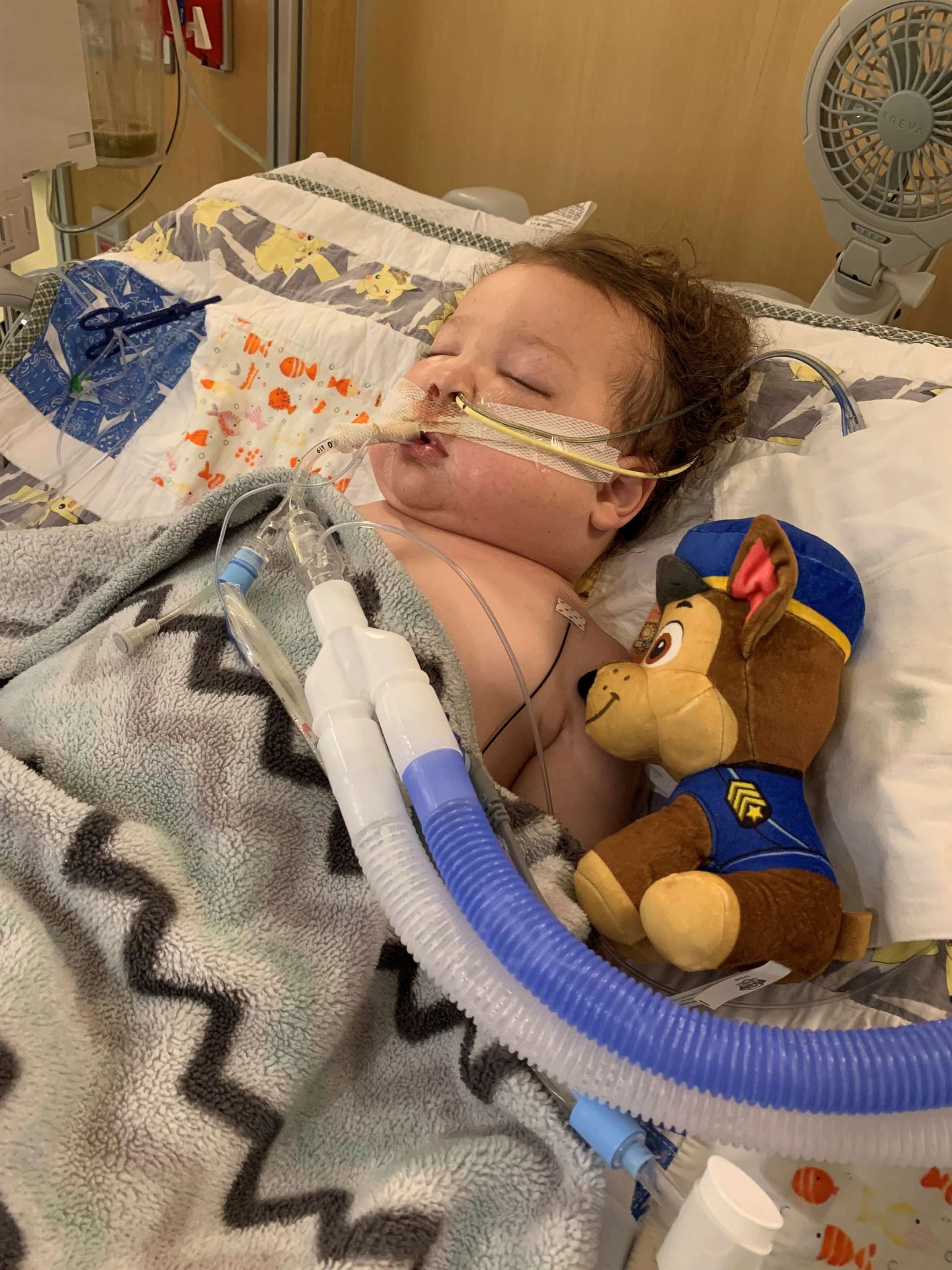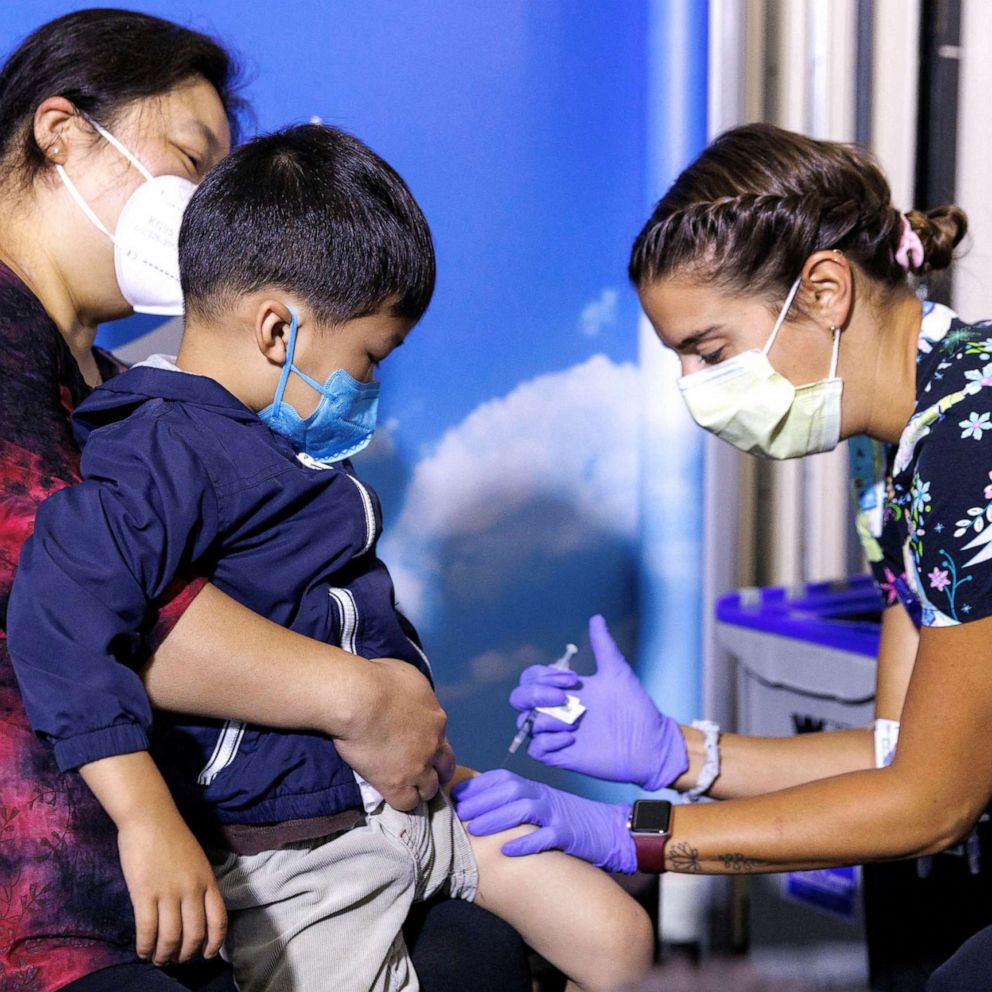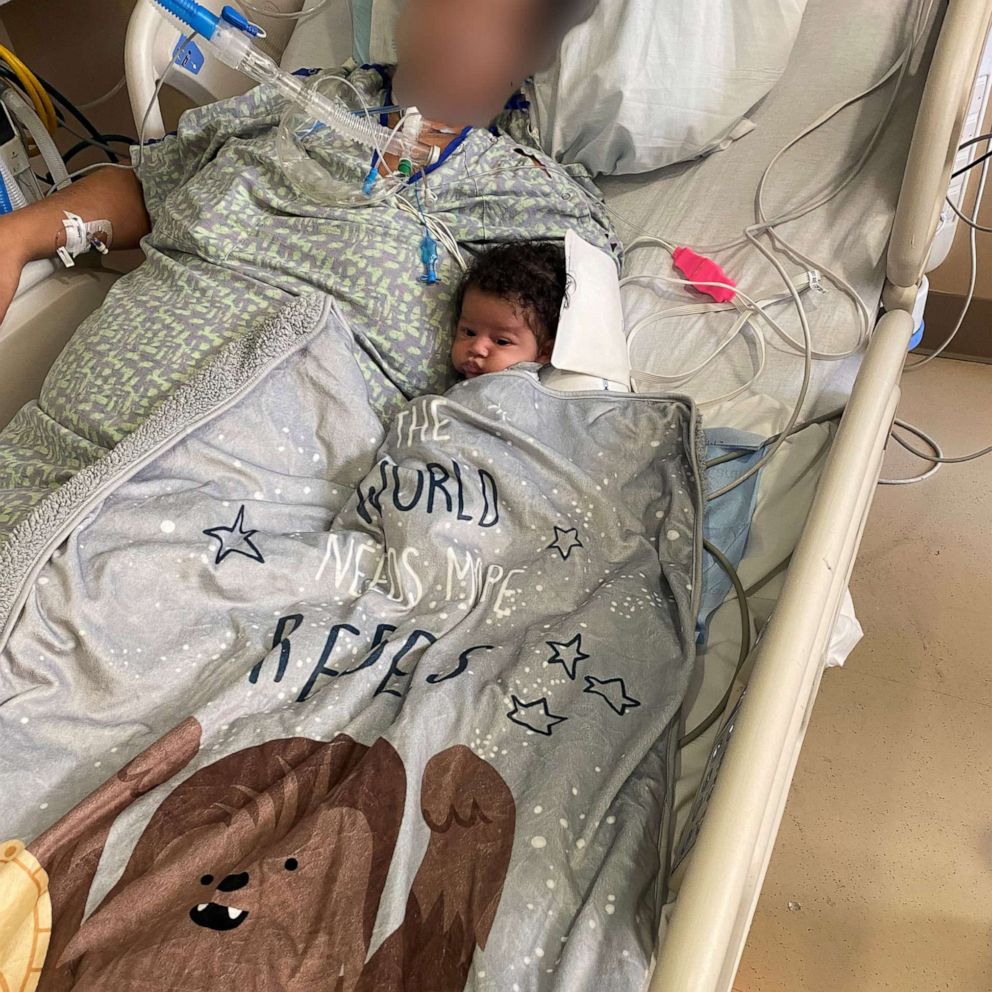2-year-old with COVID-19 placed on ventilator: What parents of kids under 5 should know
Two pediatric experts answer questions about protecting toddlers and infants.
Adrian James is one of the more than 320,000 children diagnosed with COVID-19 in the United States in the past two weeks, according to federal data.
The 2-year-old from Mount Vernon, Illinois, faced severe complications from the virus, including a nearly two-week hospital stay, five days of which he was kept alive on a ventilator, according to his mom, Tiffany Jackson.
"At one point I honestly did not know whether he was going to make it or not because it took him so long to show signs of improvement," Jackson told "Good Morning America," adding that her son's first symptom was a mild cough. "I was so scared."
Adrian, who also developed pneumonia while battling the virus, was discharged from the hospital on Monday, according to Jackson.

The toddler is continuing to recover well, but will have to return to the hospital in six weeks to check his lungs, according to Jackson, who said no one else in her family had COVID-19 symptoms at the time Adrian tested positive for the virus.
"I honestly have no idea where he got it," said Jackson, who cared for Adrian full-time at home. "It was a surprise to me, that he could be so young and get so sick."

Last week, children accounted for nearly 25% of reported weekly COVID-19 cases in the U.S., according to a weekly report released Monday by the American Academy of Pediatrics and the Children’s Hospital Association.
"When [the pandemic] first started, we were all talking about how this was such a strange virus that was really targeting the older population and kids were really by and large sheltered from any significant illness," said Dr. Marya Strand, chief medical officer at SSM Health Cardinal Glennon Children’s Hospital in St. Louis, Missouri, where Adrian was treated.
"Now what we’re seeing with the delta variant is not only are kids getting sick with COVID, but kids are getting significantly sick with COVID. Early on we weren't seeing significant infections in kids under 2, but we now have infants in our hospital with significant disease," she said.
While severe illness due to COVID-19 remains uncommon among children, according to the data, medical experts say, and cases like Adrian's prove, that young kids do get sick from the virus.
"I think that's the thing a lot of people have really lost sight of, that low risk does not equal no risk," said Dr. Amy Edwards, a pediatric infectious disease specialist at University Hospitals Rainbow Babies & Children's Hospital in Ohio. "While we know, of course, that the majority of young kids who get COVID will do fine, that's not universal."
"In the absence of a crystal ball that tells us which kids are going to have severe COVID and which kids are not, it can be really difficult as a parent," said Edwards, the mother of a 2-year-old son and 4-year-old daughter.
As kids ages 5 to 11 get closer to being eligible for a COVID-19 vaccine, possibly as soon as early November, the task has become particularly difficult for parents of children younger than age five.
Children in that age group will be the very last of the population eligible for vaccination.
Here are five tips from Strand and Edwards for parents on lowering the risk of COVID-19 for kids under 5.
1. Get vaccinated.
"Vaccination remains the number one way that parents can protect their kids because if a parent is vaccinated, their child is less likely to get COVID," said Edwards. "The vast majority of the kids who are admitted to the hospital with COVID have unvaccinated parents, so while schools and daycares are a point of risk for unvaccinated kids, their major risk comes from their parents being unvaccinated."
And even if a parent who is vaccinated were to get a breakthrough case of COVID-19, which data shows is rare, they are still less likely to pass the virus on to their child, according to Edwards.
"While it is true that if you are unlucky enough to get a breakthrough infection, you could transmit the virus to your family members, there are two things you have to keep in mind," she said. "One, most people don't get a breakthrough infection and, two, if you do get a breakthrough infection you are contagious for less number of days."
Edwards also said it is important for siblings and loved ones of kids under 5 to get vaccinated as well because the more people who are vaccinated, the safer it is for people who are unvaccinated, like the under 5-years-old population.
She said she expects children ages 6 months and older to become eligible for COVID-19 vaccines as soon as next spring.
2. Stay masked.
Both Edwards and Strand said children older than age 2 should continue to wear face masks when in public places.
Vaccinated parents and siblings of unvaccinated children should also continue to wear face masks as well in public places like school, work and stores, according to both experts.
"It would be pretty easy for someone in that family to carry that virus to the young child, so the whole family needs to continue to show really good precautions in protecting the little members of their family," said Strand. "So kids need to stay masked in school, parents need to stay masked at work and that way, when they come home, they can be a family unit that's safer together."
3. Keep kids home if they show symptoms of illness.
"If you're sick or if your children are sick, then you need to stay home," said Strand. "It does not matter that it's the holidays, or that it's Halloween, or that your kids are going to be disappointed. They're going to be a lot more disappointed people when someone is tragically ill if you just had to get to that neighborhood party."
Strand also said it is critically important to make sure kids get flu shots this year.
"It can’t be stressed enough that as we enter this flu season, the more people that we can protect from flu, the better off everyone will be," she said. "What we’re seeing is that our health care system is overwhelmed with patients right now."
4. Pay attention to who your kids are interacting with.
Edwards said she makes sure all people who come inside her home and interact with her kids are either vaccinated or have a recent negative COVID-19 test.
And when her kids play with neighborhood friends, she has a standing rule that they're only allowed to play outside since she doesn't know the vaccination status of all the parents.
"If a neighbor friend invites them over to play with dolls inside, the answer is always no, and my kids know that," she said. "If we take them out into public, like to a local park, they know that, yes, they can play but they're supposed to kind of keep their distance from other kids, and if a park is too crowded, we simply leave and go to a different place."
5. Assess how risk-averse your family needs to be.
Edwards pointed out that her family takes extra precautions when it comes to COVID-19 because, one, she does not want her unvaccinated children exposed to the virus, and, two, as a pediatric infectious disease specialist in the middle of a global pandemic, she does not have the ability to take time off if the family had to quarantine.
Likewise, a family with an unvaccinated toddler who is immunocompromised may also take more precautions than the average family. On the other hand, a family that has no underlying conditions and lives in an area with a low transmission rate of COVID-19 may have more freedom.
This will apply especially as families decide in the coming weeks whether or not to gather for the holidays.
Edwards said everyone in her extended family is vaccinated, for example, so she is comfortable gathering with them with her two young children.
"Families have to understand their family risk when they make decisions around masking, vaccinating, social distancing and testing," said Edwards. "And each family needs to understand their familial risk tolerance, how tolerant are they of taking those risks, and then the measures that they can take to mitigate those risks."







